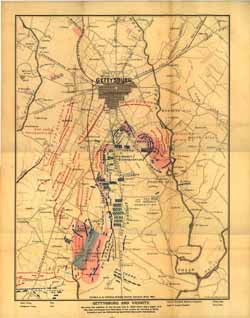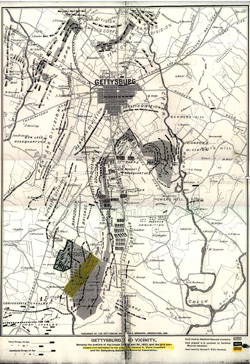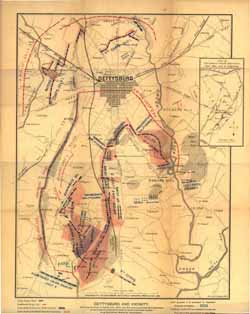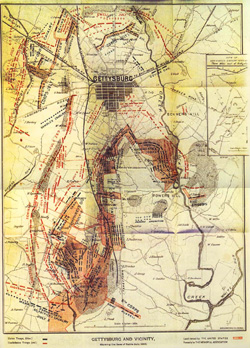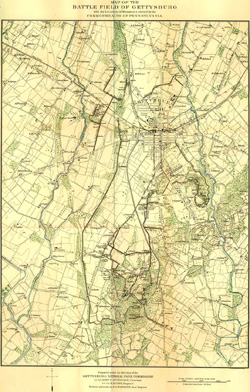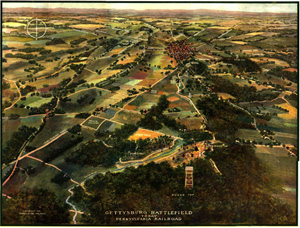|
The Gettysburg Battlefield Memorial Association Maps |
|||
|
In July of 1882 the board of directors of the GBMA, upon motion of General Louis Wagner, resolved "to make a map of the battlefield so as to show what we own of it. This to be used in connection with our efforts after appropriations." The map as envisioned by the GBMA would: "show the town, all the roads and streams, hills and mountains, names of principal owners of land, our property in pink, Crawford's blue, position of rebel troops (3rd days fight) red, and Union troops blue, also names of Division and Corps Commanders on both sides." (For complete annotations, click the individual map dates.) |
|||
